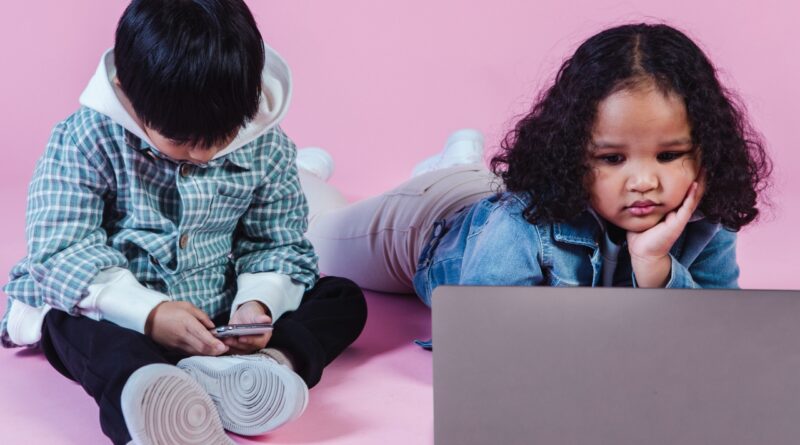Encouraging Healthy Eyes for Back to School Amid COVID-19
by Dr. Scott Edmonds, chief eye care officer, UnitedHealthcare
Fall is back-to-school season, an ideal time to get your child’s eyes checked and focus on healthy vision habits.
 This takes on added importance given the COVID-19 pandemic, which has prompted many people to spend more time on digital devices and required a move to distance learning for millions of students nationwide. In fact, children now spend an average of 13 hours per day on digital devices[1], potentially contributing to digital eye strain and increasing the risk of nearsightedness among young people.[2]
This takes on added importance given the COVID-19 pandemic, which has prompted many people to spend more time on digital devices and required a move to distance learning for millions of students nationwide. In fact, children now spend an average of 13 hours per day on digital devices[1], potentially contributing to digital eye strain and increasing the risk of nearsightedness among young people.[2]
Children may be especially at risk, as their still-developing eyes generally allow for more high-energy blue light to reach their retinas.[3] Additionally, children may hold devices closer to their face, leading to a higher amount of potentially harmful blue light exposure.
Good eye health is important for everyone and especially for students, in part because 80% of what children learn is through their eyes. With that in mind, here are three eye health tips to consider as part of back-to-school season:
Reduce the risk of digital eye strain: Digital eye strain may be caused by prolonged use of computers, smartphones or tablets, potentially causing symptoms such as sore, tired, watery or dry eyes, headache, or sore neck, shoulder or back.[4] To help reduce the risk, encourage your child to practice healthy vision habits by keeping computer screens at least 30 inches away from their eyes; resting their eyes every 20 minutes; and blinking frequently to avoid dry eyes. Practice the 20/20/20 rule: every 20 minutes, take 20 seconds and look at something 20 feet away. Getting outside and away from digital screens may also reduce the risk of nearsightedness, which affects 41% of Americans – up from 25% in 1970.[5] Also, look for digital devices that include blue-light blocking technology or obtain glasses with premium anti-reflective coating, which may help prevent potentially harmful reflective glare and reduce the risk of digital eye strain.
 Look for warning signs of eye issues: The inability to see clearly may affect a child’s physical, emotional and social development, which in turn may affect academic and athletic performance and, ultimately, self-esteem. Unfortunately, sometimes children may not be aware and won’t complain if their vision isn’t normal, so it’s important to look for possible signs of vision problems. Red flags may include squinting while reading or watching television; difficulty hitting or catching a ball while playing sports; or issues watching 3D movies such as discomfort or dizziness.[6] These potential warning signs may indicate an underlying vision problem that might require glasses or other treatments from an eye care professional.
Look for warning signs of eye issues: The inability to see clearly may affect a child’s physical, emotional and social development, which in turn may affect academic and athletic performance and, ultimately, self-esteem. Unfortunately, sometimes children may not be aware and won’t complain if their vision isn’t normal, so it’s important to look for possible signs of vision problems. Red flags may include squinting while reading or watching television; difficulty hitting or catching a ball while playing sports; or issues watching 3D movies such as discomfort or dizziness.[6] These potential warning signs may indicate an underlying vision problem that might require glasses or other treatments from an eye care professional.
Get a comprehensive eye exam: The American Optometric Association recommends that a child’s first comprehensive eye exam should occur between 6 months and 12 months, again at age 3 and before entering school at age 5 or 6. It’s important to remember that a school’s vision screening is not a substitute for a comprehensive eye exam. Vision screenings at school usually focus on measuring acuity levels and might miss common conditions such as poor eye alignment, focusing problems and farsightedness. Plus, a comprehensive eye exam may uncover other health conditions not usually associated with the eyes, including diabetes and juvenile rheumatoid arthritis.
As families plan back-to-school health and safety strategies, including immunizations and the flu vaccine, considering these tips may help make sure your child is ready to learn – either in person or remotely.
References
[1] Eyesafe, 2020, https://eyesafe.com/covid-19-screen-time-spike-to-over-13-hours-per-day
2 Investigative Ophthalmology & Visual Science, http://iovs.arvojournals.org/article.aspx?articleid=2183997
3 The American Optometric Association, 2020, https://www.aoa.org/Documents/OptometryCares/Blue%20Light%20Impact%20in%20Children.pdf
4 Mayo Clinic, 2020, https://www.mayoclinic.org/diseases-conditions/eyestrain/symptoms-causes/syc-20372397
5 National Eye Institute, https://nei.nih.gov/content/myopia-close-look-efforts-turn-back-growing-problem
6 American Optometric Association, 2020, https://www.aoa.org/patients-and-public/good-vision-throughout-life/childrens-vision/school-aged-vision-6-to-18-years-of-age.

